Search Engine Optimization
Search Engine Optimization (SEO) is a set of strategies, techniques, and practices aimed at improving the visibility and ranking of a website or web page in search engine results pages (SERPs). The primary goal of SEO is to increase organic (non-paid) traffic to a website by optimizing various aspects of the site to make it more attractive to search engines like Google, Bing, and Yahoo

On SEO its involves in a wide range of activities, including:
- Keyword Research: Identifying relevant keywords and phrases that people use when searching for information related to your website’s content.
- On-Page Optimization: Making changes to the content and structure of web pages to make them more search engine-friendly. This incorporates improving title labels, meta portrayals, headings, and content.
- Off-Page Optimization: Building high-quality back-links from other reputable websites to increase the site’s authority and trustworthiness.
- Technical SEO: Ensuring that the website’s technical aspects are optimized for search engines, such as improving page load speed, optimizing for mobile devices, and fixing crawl errors.
- Content Creation: Creating high-quality, relevant, and valuable content that appeals to both users and search engines.
- User Experience (UX) Optimization: Ensuring that the website is user-friendly, with easy navigation, good page layout, and mobile responsiveness.
- Local SEO (if applicable): Optimizing a website for local search results, especially important for businesses with physical locations.
- Monitoring and Analytic: Continuously monitoring website performance, tracking keyword rankings, and analyzing user behavior through tools like Google Analytic.
- SEO Audits: Regularly assessing the website’s SEO health and making necessary adjustments to improve performance.
- Ethical Practices: Following best practices and ethical guidelines established by search engines to avoid penalties and maintain a positive online reputation.
The ultimate aim of SEO is to improve a website’s search engine rankings, drive more organic traffic, and enhance the online visibility of a business or organization, which can lead to increased brand awareness and potential revenue growth. SEO is an ongoing process, as search engine algorithms change frequently, and competition for top search positions remains high.
- User Experience (UX) Optimization: Ensuring that the website is user-friendly, with easy navigation, good page layout, and mobile responsiveness.
- Local SEO (if applicable): Optimizing a website for local search results, especially important for businesses with physical locations.
- Monitoring and Analytic: Continuously monitoring website performance, tracking keyword rankings, and analyzing user behavior through tools like Google Analytic.
- SEO Audits: Regularly assessing the website’s SEO health and making necessary adjustments to improve performance.
- Ethical Practices: Following best practices and ethical guidelines established by search engines to avoid penalties and maintain a positive online reputation.
The ultimate aim of SEO is to improve a website’s search engine rankings, drive more organic traffic, and enhance the online visibility of a business or organization, which can lead to increased brand awareness and potential revenue growth. SEO is an ongoing process, as search engine algorithms change frequently, and competition for top search positions remains high.
what is keyword in seo?
In SEO (Search Engine Optimization), a keyword refers to a specific word or phrase that summarizes the main topic or subject of a web page’s content. Keywords are crucial in SEO because search engines use them to understand the content of a web-page and match it with user search queries. When a user enters a search query into a search engine, the search engine’s algorithms analyze the keywords in the query and try to deliver the most relevant web pages that contain those keywords.
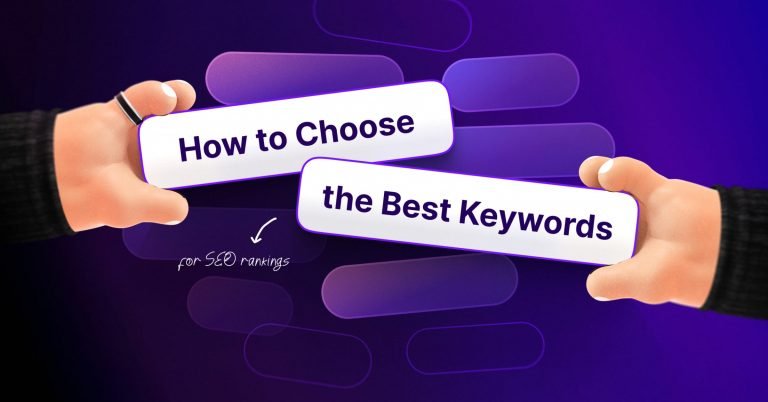
Here are some key points to understand about keywords in SEO:
1.Primary Keywords: These are the main keywords that represent the primary focus of a web page’s content. For example, if a web page is about “digital cameras,” then “digital cameras” would be the primary keyword.
2.Secondary Keywords: These are related keywords and phrases that support the primary keyword and provide additional context. Using the previous example, secondary keywords could include “camera features,” “camera brands,” or “camera reviews.”
- Long-Tail Keywords: Long-tail watchwords are longer and more unambiguous catchphrase phrases. They often target a niche audience and can be valuable for attracting highly targeted traffic.
- Keyword Research: SEO professionals and website owners conduct keyword research to identify the most relevant and valuable keywords for their content. Keyword research tools help in finding keywords with high search volumes and relatively low competition.
- Keyword Optimization: Once keywords are identified, they are strategically integrated into the content, including the title, headings, body text, and meta tags. This optimization helps search engines understand the page’s relevance to specific search queries.
- Keyword Density: This refers to the frequency at which a keyword is used within a piece of content. It’s essential to maintain a natural and reasonable keyword density to avoid over-optimization, which can lead to penalties from search engines.
- User Intent: In addition to using keywords, it’s crucial to consider user intent. Understanding why someone is searching for a particular keyword helps in creating content that addresses their needs and provides value.
8.Keyword Ranking: SEO efforts often aim to improve a web page’s ranking for specific keywords in search engine results pages (SERPs). The goal is to appear higher in the results for keywords relevant to the content.
It’s important to note that while keywords are a fundamental part of SEO, modern SEO also focuses on providing high-quality, informative, and engaging content that genuinely serves the needs of users. Simply stuffing keywords into content without offering value is not an effective SEO strategy and can result in a poor user experience.
what On-Page Optimization?
Lorem ipsum dolor sit amet, consectetur adipiscing elit. Ut elit tellus, luctus nec ullamcorper mattis, pulvinar dapibus leo.

- Keyword Usage: On-page optimization involves strategically placing relevant keywords and keyword phrases within the content, title tags, headings (H1, H2, etc.), meta descriptions, and other on-page elements. This helps search engines understand the topic and relevance of the page to specific search queries.
- High-Quality Content: Creating informative, valuable, and engaging content is crucial for on-page optimization. Content should address the needs and interests of the target audience while providing unique and authoritative information.
- Title Tags: The title tag is a crucial on-page element that appears in search engine results and web browser tabs. It should be concise, descriptive, and include the primary keyword for the page.
- Meta Descriptions: Meta descriptions provide a brief summary of the page’s content in search results. They should be compelling, relevant, and encourage users to click through to the page.
- Header Tags (H1, H2, etc.): Proper use of header tags helps structure content and makes it more accessible for both users and search engines. The H1 tag typically represents the main heading or topic of the page.
- URL Structure: Creating clean and descriptive URLs that include keywords can improve the user experience and help search engines understand the content hierarchy.
- Image Optimization: Images should be appropriately named and accompanied by alt text that describes the image’s content. This enhances accessibility and helps search engines index images.
- Internal Linking: Linking to other relevant pages within your website helps users navigate and discover more content. It also distributes link authority (Page-rank) throughout the site.
- Mobile Optimization: Ensuring that web pages are mobile-responsive and load quickly on mobile devices is increasingly important, as mobile usability is a ranking factor for search engines.
- Page Load Speed: Faster-loading pages improve user experience and may positively impact search engine rankings.
- Schema Markup: Adding structured data markup (Schema.org) to your content can help search engines understand and display specific information, such as reviews, events, and product details, in search results.
- User Experience (UX): A user-friendly design, clear navigation, and a logical page layout contribute to a positive user experience, which can indirectly affect SEO by reducing bounce rates and improving user engagement.
13.Content Formatting: Properly formatting content with headings, lists, and paragraphs makes it more readable and scannable for users and search engines.
14.Canonical Tags:Using canonical tags can help prevent duplicate content issues by specifying the preferred version of a page when multiple versions exist.
On-page optimization is an ongoing process that requires monitoring, analysis, and adjustments over time. It plays a crucial role in improving a web-page’s search engine ranking and attracting organic traffic by aligning the content and structure of the page with the intent of search engine users.
What is Long-Tail Keywords?
Long-tail keywords are longer and more specific keyword phrases that users typically enter into search engines when they are looking for very particular information, products, or services. Unlike short, generic keywords (often referred to as “head” keywords), long-tail keywords are more detailed and specific.
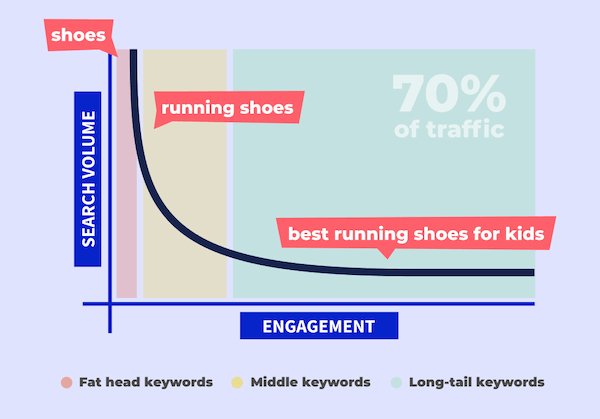
1.Length: Long-tail keywords consist of three or more words, and they can be quite descriptive and specific.
2.Specificity: Long-tail keywords are highly specific to a particular topic, niche, or product. They often address a user’s specific query or need.
- Lower Search Volume: Long-tail keywords usually have lower search volumes compared to shorter, more general keywords. However, they can still attract valuable, highly targeted traffic.
- Reduced Competition: Because they are so specific, long-tail keywords often have less competition in search engine results. This can make it easier for websites to rank for these keywords.
- Higher Conversion Rates: Users who search for and find content or products using long-tail keywords tend to be further along in the buying process and are often more likely to convert into customers. This is because they have a clearer idea of what they’re looking for.
Here are a few examples to illustrate the difference between head keywords and long-tail keywords:
– Head Keyword: “Digital Cameras”
– Long-Tail Keyword: “Best DSLR cameras under $500”
– Head Keyword: “Travel Tips”
– Long-Tail Keyword: “Solo backpacking tips for Southeast Asia”
– Head Keyword:”Healthy Recipes”
Long-tail keywords are particularly valuable in SEO and content marketing strategies because they allow websites to:
- Attract Targeted Traffic: By targeting specific long-tail keywords related to your niche or industry, you can draw in users who are more likely to be interested in your content, products, or services.
- Enhance Content Relevance: Creating content around long-tail keywords allows you to provide in-depth, highly relevant information to users with specific needs or questions.
3.Compete in Niche Markets: If you’re in a competitive industry, targeting long-tail keywords can be an effective way to differentiate yourself and rank for terms that larger competitors may overlook.
4.Improve Conversion Rates: Visitors who arrive at your website via long-tail keyword searches are often more motivated to take action, such as making a purchase or signing up for a newsletter.
While long-tail keywords may individually have lower search volumes compared to head keywords, collectively, they can make up a significant portion of your website’s organic traffic and contribute to its overall success in search engine rankings and user engagement.
what is Keyword Research?
Keyword research is a pivotal cycle in website streamlining (Web optimization) and content promotion. It includes distinguishing and breaking down unambiguous words or expressions (catchphrases) that individuals use while looking for data, items, or administrations on web indexes like Google, Bing, or Hurry.. The goal of keyword research is to understand the language and queries that your target audience uses and to use this information to optimize your website content, improve search engine rankings, and attract more organic traffic.
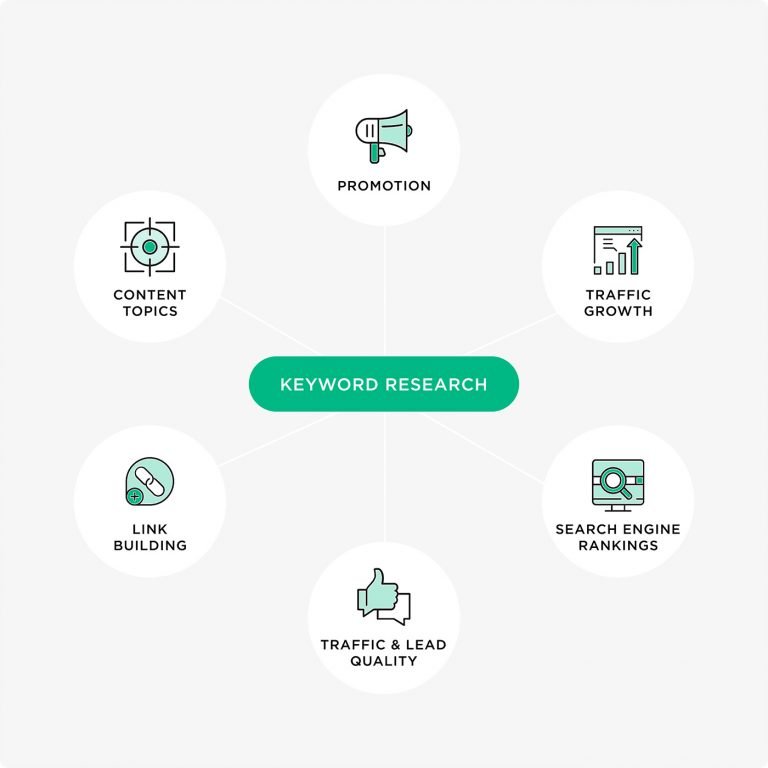
Here is a bit-by-bit outline of the watchword research process:
- Define Your Goals: Understand what you want to achieve with your website or content. Are you trying to sell products, provide information, generate leads, or achieve some other objective?
2.Identify Your Target Audience: Define your ideal audience or customer persona. Who are they, and what are their necessities, interests, and trouble spots?
3.Brainstorm Keywords: Start with a brainstorming session to generate a list of potential keywords and phrases that are relevant to your niche or industry. Think about the terms your target audience might use when searching for information related to your offerings.
4.Use Keyword Research Tools: To expand your list and gather data, use keyword research tools like Google Keyword Planner, SEMrush, Ahrefs, Moz Keyword Explorer, or Ubersuggest. These tools provide insights into search volume, keyword difficulty, and related keyword ideas.
5.Analyze Keyword Metrics: Examine the metrics associated with each keyword, such as search volume (how often the keyword is searched for), keyword difficulty (how competitive it is to rank for that keyword), and click-through rate (CTR) potential.
6.Competitor Analysis: Study the keywords your competitors are targeting. This can help you identify gaps in your own keyword strategy and discover opportunities.
7.Long-Tail Keywords: Consider using long-tail keywords, which are longer and more specific keyword phrases. While they may have a lower search volume, they often have less competition and can attract highly targeted traffic.
8.Group Keywords: Organize your keywords into groups or themes. This helps you create focused content and optimize your website structure.
9.Content Creation: Develop high-quality, informative, and engaging content around the selected keywords. Ensure that your content provides value and answers the questions your target audience is likely to have.
10.Monitor and Update: Regularly review your keyword strategy and adapt it as needed. Search trends can change over time, and new keywords may emerge.
- Track Performance: Use web analytic tools like Google Analytic to track the performance of your content and the keywords driving traffic to your site.
Keyword research is an ongoing process, and it’s essential for improving your website’s visibility in search engines, attracting relevant visitors, and ultimately achieving your online goals. It’s important to strike a balance between targeting keywords with high search volume and those with lower competition to maximize your SEO efforts.
What is Keyword Optimization?
Keyword optimization, also known as keyword optimization or keyword targeting, is the process of strategically using selected keywords or phrases within your website content, meta tags, and other on-page elements to work on your site’s permeability in web crawler results pages (SERPs).. The goal of keyword optimization is to make it easier for search engines to understand the relevance of your web pages to specific search queries, ultimately leading to higher rankings and more organic traffic.
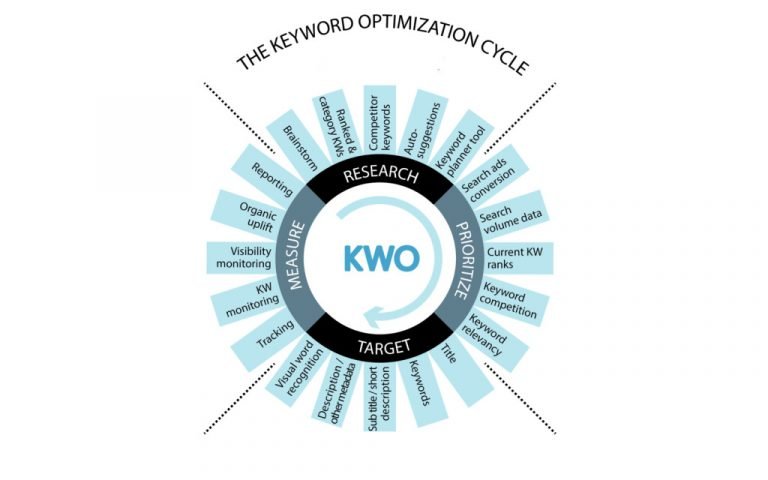
Here are the key components and strategies involved in keyword optimization:
1.Keyword Selection: This is the initial step in keyword optimization. It involves researching and selecting relevant keywords and phrases that align with your content and target audience. You want to choose keywords that have a balance between search volume (how often they are searched for) and competition (how many other websites are targeting the same keywords).
- On-Page Optimization:
Title Tags: Include the chosen keyword in the title tag of your web page. The title tag is a crucial on-page element and one of the most significant factors search engines consider when ranking pages.
Meta Descriptions: Craft compelling meta descriptions that include the target keyword and encourage users to click on your search result.
Header Tags: Use header labels (H1, H2, H3, and so forth) to structure your substance. Include the keyword in at least one header tag, typically the H1 tag, to indicate the main topic of your page.
Content: Create high-quality content that naturally incorporates the chosen keyword. Avoid keyword stuffing, which is the excessive use of keywords in a way that disrupts the readability and quality of the content.
Image Alt Text: When using images, include descriptive alt text that contains the keyword if relevant.
- URL Structure: Incorporate keywords into your URLs when possible. A URL that includes the keyword can help both users and search engines understand the page’s topic.
- Internal Linking: Use internal links to connect related pages on your website. Anchor text (the text used for the link) should include keywords when relevant.
5.Mobile Optimization: Ensure that your website is mobile-friendly, as mobile-friendliness is a ranking factor. Responsive design and fast loading times are essential.
- User Experience (UX): A good user experience is critical for SEO. Ensure that your website is easy to navigate, loads quickly, and provides valuable information to visitors.
7.Local SEO: If you have a physical location or serve a specific geographic area, optimize for local SEO by including location-based keywords in your content and meta tags.This is especially significant for organizations focusing on neighborhood clients.
8.Regular Monitoring and Adjustments: Keep an eye on your website’s performance in search results. If you’re not achieving the desired rankings or traffic, consider adjusting your keyword strategy or making improvements to your content and website structure.
Remember that while keyword optimization is important, it should be done in a way that prioritizes user experience and provides valuable, relevant content. Search engines like Google have become more sophisticated and prioritize content quality and user intent over keyword density. Therefore, it’s crucial to strike a balance between keyword optimization and delivering a great user experience.
What is Keyword Density?
Keyword thickness alludes to the level of times a particular catchphrase or expression shows up inside a piece of content contrasted with the complete number of words in that satisfied. It is often expressed as a percentage. In the context of SEO (Search Engine Optimization), keyword density was once considered an important metric for optimizing web pages for search engines. However, its significance has diminished over the years, and it’s no longer a primary factor in search engine ranking algorithms.
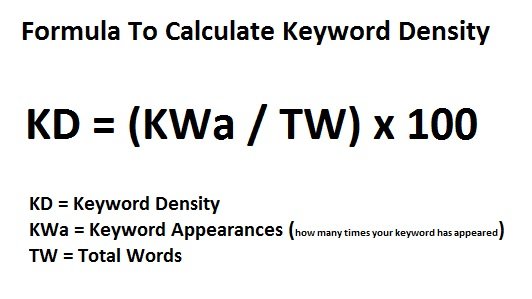
In the past, website owners and SEO practitioners believed that by using a keyword frequently within their content, they could improve their rankings in search engine results pages (SERPs). They would calculate keyword density to ensure they included the keyword a certain number of times, often aiming for a specific percentage, such as 2% to 3%.
Here’s the formula for calculating keyword density:
Keyword Thickness (%) = (Number of Times Catchphrase Shows up/All out Number of Words) x 100
For example, if a 500-word article contains the keyword “digital marketing” 10 times, the keyword density would be:
(10 / 500) x 100 = 2%
However, search engines have evolved to focus more on the overall quality and relevance of content rather than the specific keyword density. Keyword stuffing, which is the excessive use of keywords to manipulate search engine rankings, is now considered a black hat SEO tactic and can result in penalties from search engines.
Today, SEO best practices involve a more natural and user-focused approach to content creation.
1.Content Quality: Create high-quality, informative, and engaging content that provides value to your audience.
2.User Intent: Focus on understanding and fulfilling user intent. Your content should answer the questions and address the needs of your target audience.
3.Variety of Keywords: Instead of obsessing over a single keyword, use a variety of related keywords and synonyms naturally within your content.
- Readability: Prioritize readability and user experience. Content should flow naturally and be easy to understand.
- Context: Consider the context of your content and the topic it covers. Keywords should fit naturally into the discussion.
- Use of Latent Semantic Indexing (LSI): LSI keywords are words and phrases related to the main keyword. Incorporating LSI keywords can help search engines better understand the content’s topic.
In summary, while keyword density was once a prominent SEO metric, it’s no longer the primary focus in modern SEO practices. Instead, the emphasis is on providing valuable, high-quality content that satisfies user intent and follows best practices for on-page optimization.

“Thank you for being a motivational lighthouse, guiding us through storms and inspiring us to keep sailing towards our dreams.”
nice content!nice history!! boba 😀
wow, amazing
nice content!nice history!! boba 😀
Wow Thanks for this write-up i find it hard to locate smart knowledge out there when it comes to this blog posts appreciate for the information site